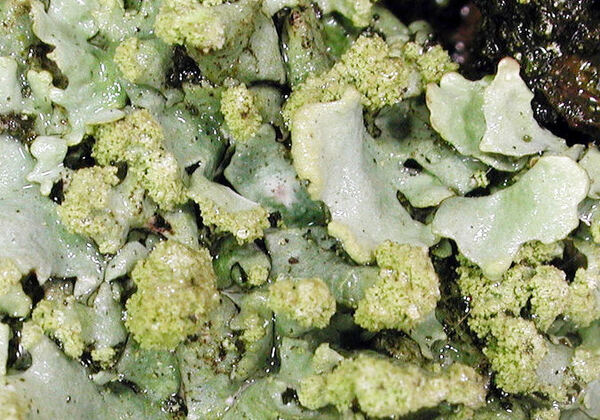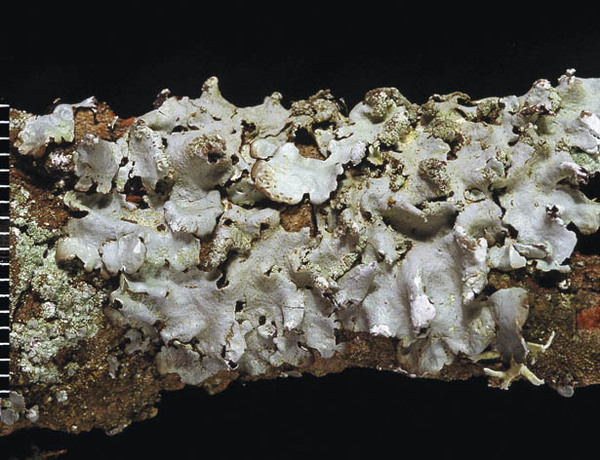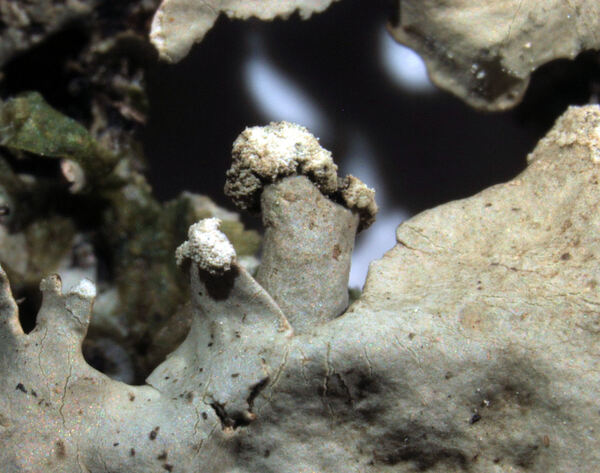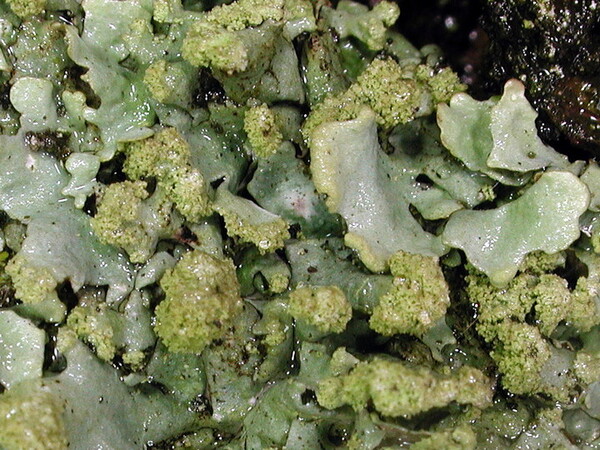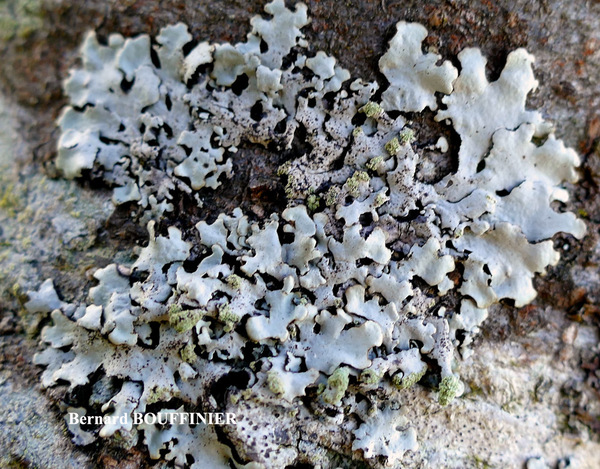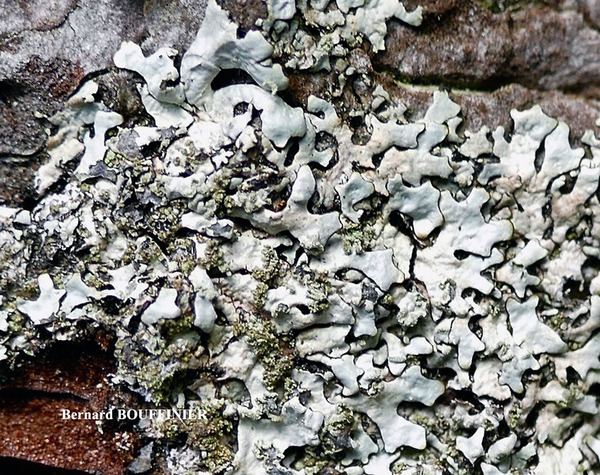Hypotrachyna revoluta (Flörke) Hale
Smithsonian Contr. Bot., 25: 60, 1975. Basionym: Parmelia revoluta Flörke - Deutsche Lich., 1: 11, 1815.
Synonyms: Imbricaria revoluta (Flörke) Flot.; Imbricaria sinuosa var. angustifolia Anzi; Imbricaria sinuosa var. latifolia Anzi
Description: Thallus foliose, heteromerous, dorsiventral, rather loosely attached, forming 1-4(-6) cm wide (rarely wider, up to 10 cm), more or less irregular rosettes, sorediate. Lobes irregularly subdichotomously branched with rounded to angular axils, (1-)2-6 mm wide, often imbricate, at first closely adpressed, then slightly ascending at tips, with subtruncate to rounded, often revolute apices (especially when sorediate). Upper surface grey to greenish grey, often with a brownish hue in central parts, dull, emaculate, smooth, with initially subcapitate, subterminal soralia that later coalesce, especially at the revoluted lobe tips, bearing farinose to rarely granulose, whitish to greenish soredia. Lower surface black in central parts, brown in marginal and apical parts, that of young lobes dull, with brown to black, dull, short, forked or sparingly dichotomously branched, rarely simple rhizines, which rarely can project beyond lobe margins snd often are lacking below the sorediate parts. Upper cortex of tightly packed, anticlinally oriented hyphae, with a pored epicortex, the cell walls with isolichenan; medulla white; algal layer continuous; lower cortex brown, of anticlinally oriented hyphae. Apothecia very rare, lecanorine, subpedicellate, 2-6 mm across, with a brown disc and a sorediate thalline margin. Epithecium brownish; hymenium and hypothecium colourless. Asci 8-spored, clavate, Lecanora-type. Ascospores 1-celled, hyaline, ellipsoid, 10-15 × 5-9 μm. Pycnidia black, laminal, immersed. Conidia bifusiform, 4-5 x c. 1 µm. Photobiont chlorococcoid. Spot tests: upper cortex K+ yellow, C-, KC-, P- or P+ faintly yellow; medulla K-, C+ pink, KC+ pink-red, P-, UV-. Chemistry: upper cortex with atranorin and chloroatranorin; medulla with gyrophoric acid (major), 4,5-di-O-methylhiascic acid, 5-O-methylhiascic acid (minor), rarely with traces of lecanoric and umbilicaric acids.
Growth form: Foliose, broad lobed
Substrata: bark
Photobiont: green algae other than Trentepohlia
Reproductive strategy: mainly asexual, by soredia, or soredia-like structures (e.g. blastidia)
Most common in areas with a humid-warm climate (e.g. most of Tyrrenian Italy)
Commonnes-rarity: (info)
Alpine belt: absent
Subalpine belt: absent
Montane belt: extremely rare
Dry submediterranean belt: very rare
Humid submediterranean belt: rather rare
Padanian area: absent
pH of the substrata:
1 2 3 4 5
Solar irradiation:
1 2 3 4 5
Aridity:
1 2 3 4 5
Eutrophication:
1 2 3 4 5
Poleotolerance:
0 1 2 3
Altitudinal distribution:
1 2 3 4 5 6
Rarity
absent
extremely rare
very rare
rare
rather rare
rather common
common
very common
extremely common
Loading data...
Occurrence data
Predictive map
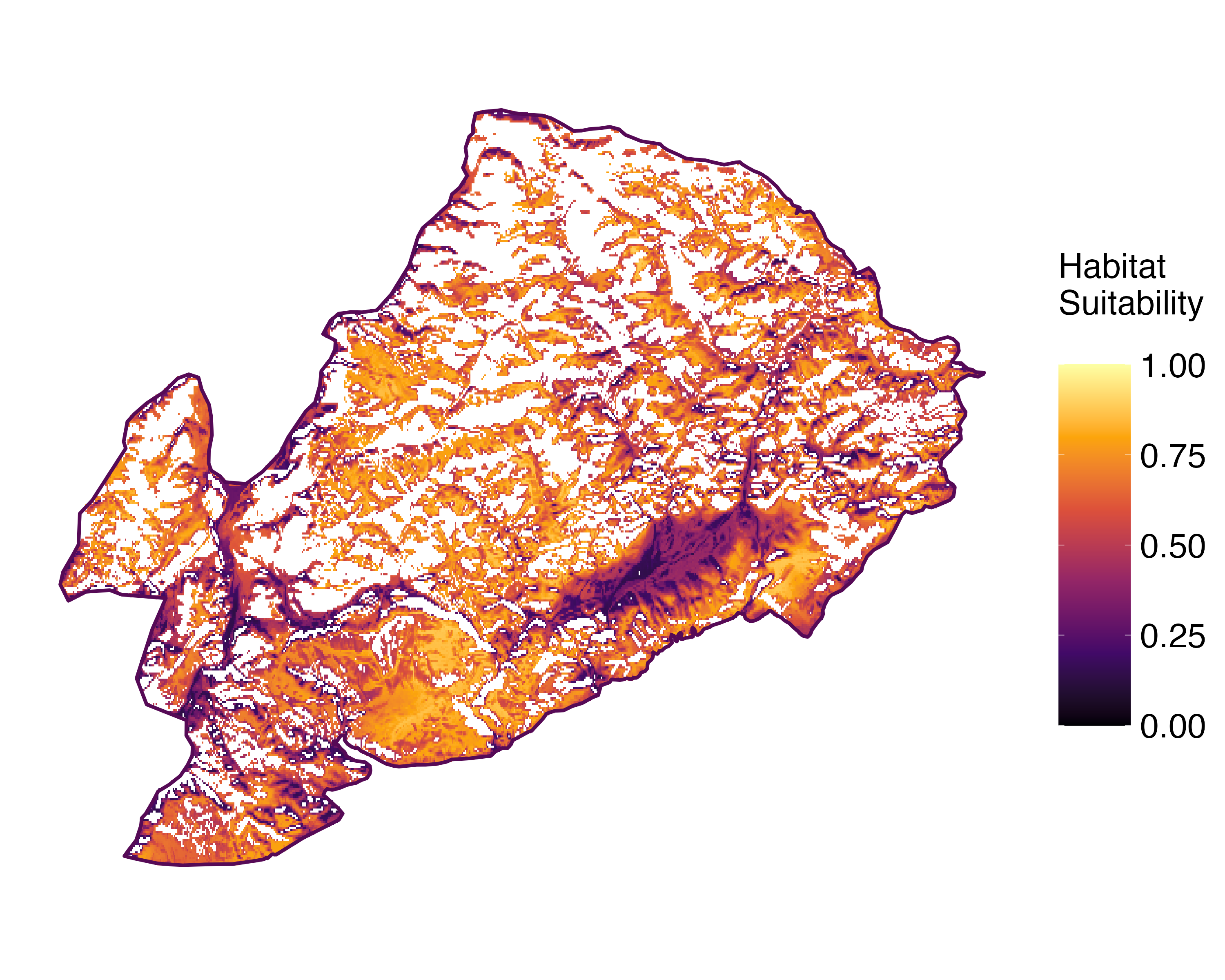 Current prediction (1981-2010)
Current prediction (1981-2010) Future prediction (2071-2100) SSP 1-2.6
Future prediction (2071-2100) SSP 1-2.6 Future prediction (2071-2100) SSP 5-8.5Predictive maps according to Francesconi et al. 2025
Future prediction (2071-2100) SSP 5-8.5Predictive maps according to Francesconi et al. 2025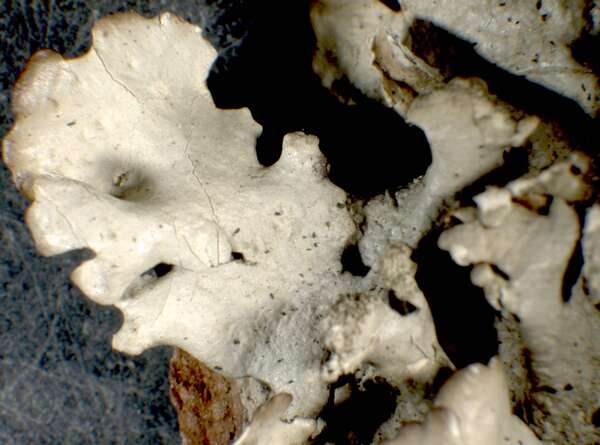
P.L. Nimis; Owner: Department of Life Sciences, University of Trieste
Herbarium: TSB (12321)
2001/12/05
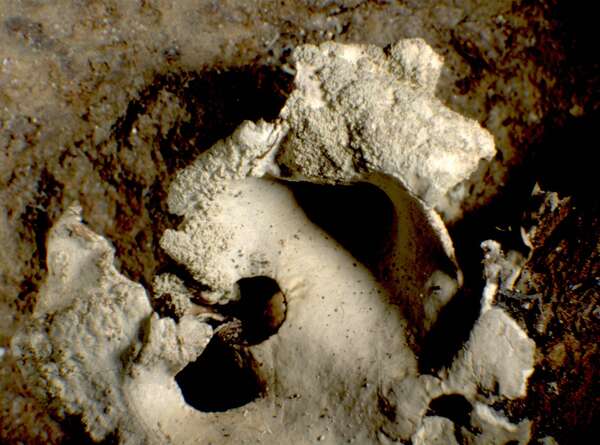
P.L. Nimis; Owner: Department of Life Sciences, University of Trieste
Herbarium: TSB (12321)
2001/12/05
detail of soralia
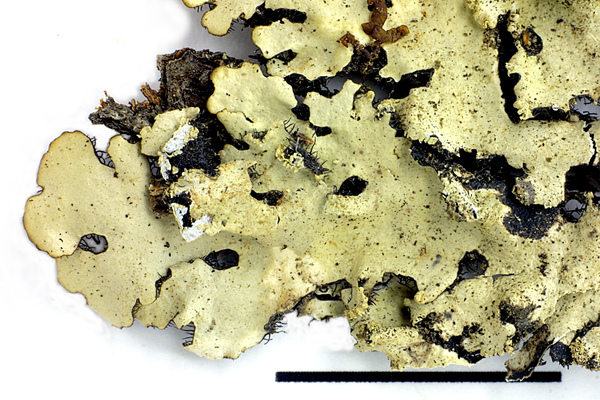
Felix Schumm - CC BY-SA 4.0
[9276], Spanien, Kanaren, La Gomera: Cruce de las Hayas, an der Abzweigung der Carretera del Centro nach Las Hayas, 28°08.122' N, 17°16.848 W, 1089 m, Lorbeer-Erica Wald. Leg. Schumm 12.02.2002, det. Schumm 02.2002.
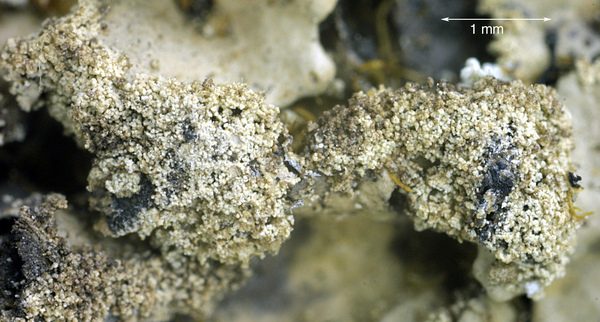
Felix Schumm - CC BY-SA 4.0
[9276], Spanien, Kanaren, La Gomera: Cruce de las Hayas, an der Abzweigung der Carretera del Centro nach Las Hayas, 28°08.122' N, 17°16.848 W, 1089 m, Lorbeer-Erica Wald. Leg. Schumm 12.02.2002, det. Schumm 02.2002.
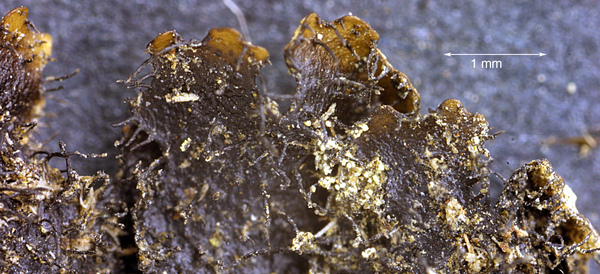
Felix Schumm - CC BY-SA 4.0
[9276], Spanien, Kanaren, La Gomera: Cruce de las Hayas, an der Abzweigung der Carretera del Centro nach Las Hayas, 28°08.122' N, 17°16.848 W, 1089 m, Lorbeer-Erica Wald. Leg. Schumm 12.02.2002, det. Schumm 02.2002.

Felix Schumm - CC BY-SA 4.0
[9276], Spanien, Kanaren, La Gomera: Cruce de las Hayas, an der Abzweigung der Carretera del Centro nach Las Hayas, 28°08.122' N, 17°16.848 W, 1089 m, Lorbeer-Erica Wald. Leg. Schumm 12.02.2002, det. Schumm 02.2002.
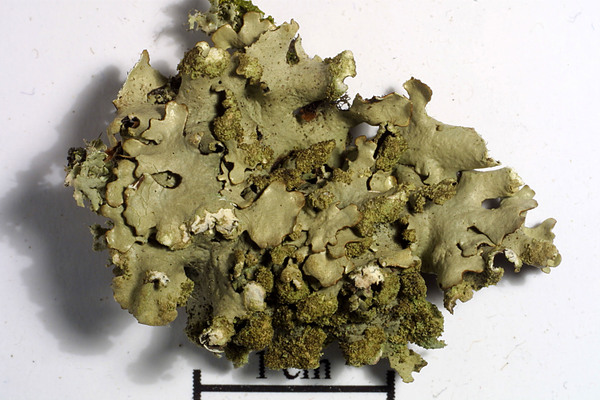
Felix Schumm - CC BY-SA 4.0
[9276], Spanien, Kanaren, La Gomera: Cruce de las Hayas, an der Abzweigung der Carretera del Centro nach Las Hayas, 28°08.122' N, 17°16.848 W, 1089 m, Lorbeer-Erica Wald. Leg. Schumm 12.02.2002, det. Schumm 02.2002.
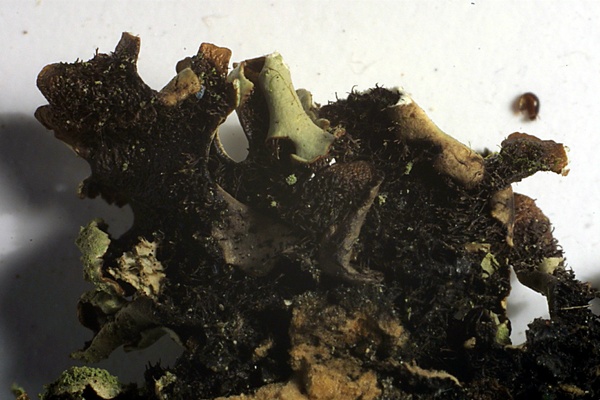
Felix Schumm - CC BY-SA 4.0
[9276], Spanien, Kanaren, La Gomera: Cruce de las Hayas, an der Abzweigung der Carretera del Centro nach Las Hayas, 28°08.122' N, 17°16.848 W, 1089 m, Lorbeer-Erica Wald. Leg. Schumm 12.02.2002, det. Schumm 02.2002.
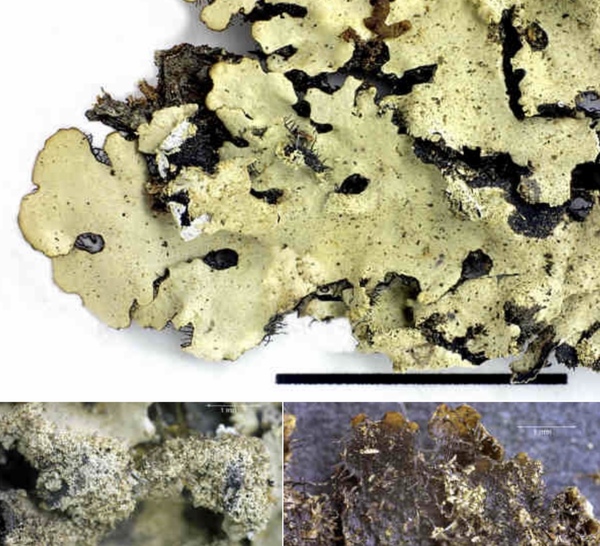
Felix Schumm – CC BY-SA 4.0
Image from: F. Schumm (2008) - Flechten Madeiras, der Kanaren und Azoren. Beck, OHG - ISBN: 978-3-00-023700-3
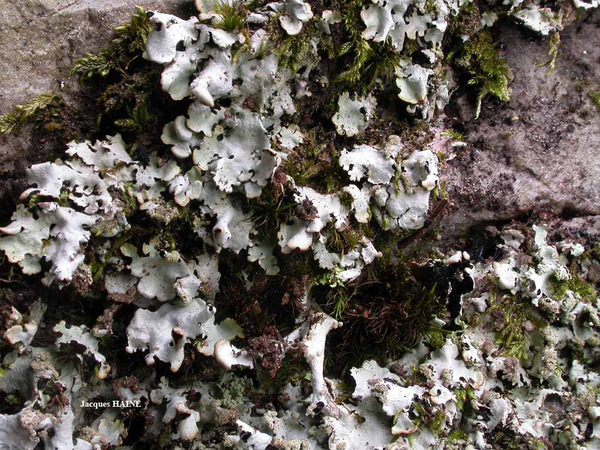
Jacques Haine - Source: http://www.lichensmaritimes.org/index.php?task=fiche&lichen=537&lang=en
France, Ardennes
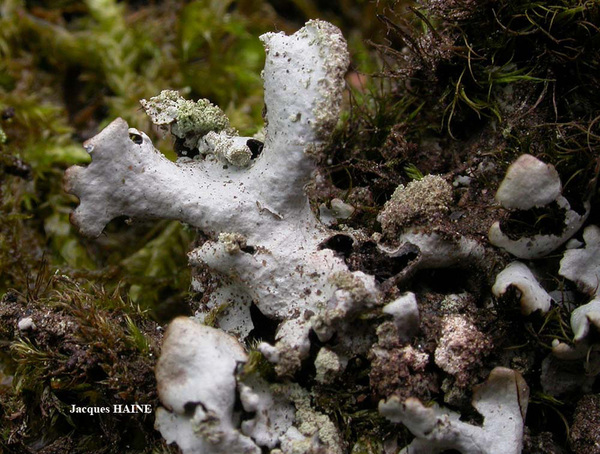
Jacques Haine - Source: http://www.lichensmaritimes.org/index.php?task=fiche&lichen=537&lang=en
France, Ardennes
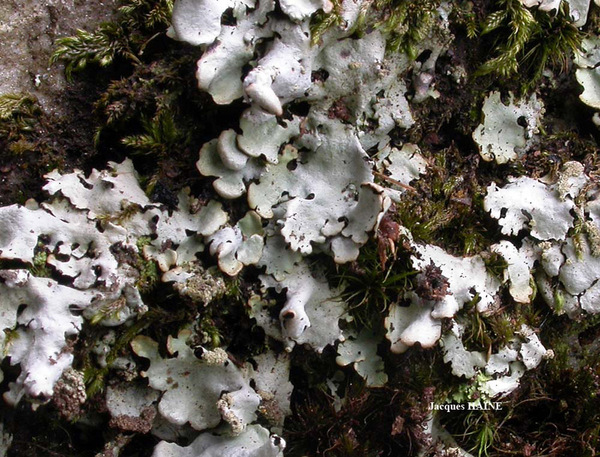
Jacques Haine - Source: http://www.lichensmaritimes.org/index.php?task=fiche&lichen=537&lang=en
France, Ardennes
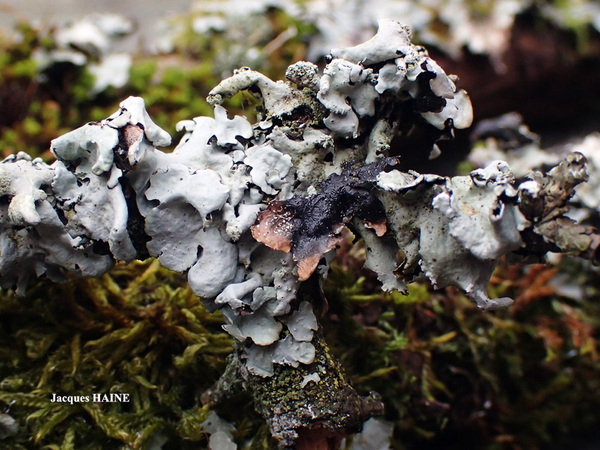
Jacques Haine - Source: http://www.lichensmaritimes.org/index.php?task=fiche&lichen=537&lang=en
France, Ardennes
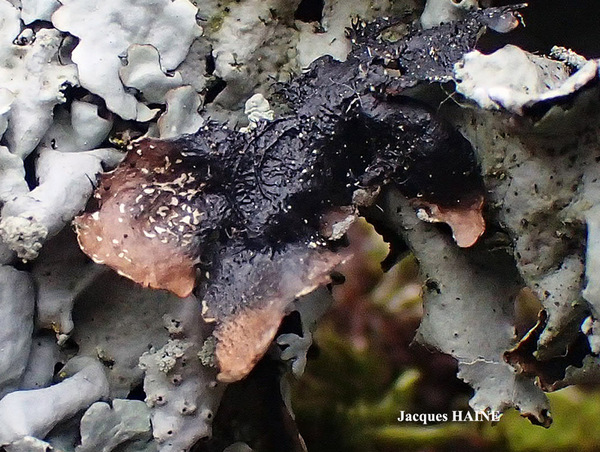
Jacques Haine - Source: http://www.lichensmaritimes.org/index.php?task=fiche&lichen=537&lang=en
France, Ardennes
Growth form: Foliose, broad lobed
Substrata: bark
Photobiont: green algae other than Trentepohlia
Reproductive strategy: mainly asexual, by soredia, or soredia-like structures (e.g. blastidia)
Most common in areas with a humid-warm climate (e.g. most of Tyrrenian Italy)
Commonnes-rarity: (info)
Alpine belt: absent
Subalpine belt: absent
Montane belt: extremely rare
Dry submediterranean belt: very rare
Humid submediterranean belt: rather rare
Padanian area: absent
pH of the substrata:
| 1 | 2 | 3 | 4 | 5 |
Solar irradiation:
| 1 | 2 | 3 | 4 | 5 |
Aridity:
| 1 | 2 | 3 | 4 | 5 |
Eutrophication:
| 1 | 2 | 3 | 4 | 5 |
Poleotolerance:
| 0 | 1 | 2 | 3 |
Altitudinal distribution:
| 1 | 2 | 3 | 4 | 5 | 6 |
Rarity
absent
extremely rare
very rare
rare
rather rare
rather common
common
very common
extremely common
Loading data...
Occurrence data
Predictive map
 Current prediction (1981-2010)
Current prediction (1981-2010) Future prediction (2071-2100) SSP 1-2.6
Future prediction (2071-2100) SSP 1-2.6 Future prediction (2071-2100) SSP 5-8.5
Future prediction (2071-2100) SSP 5-8.5Predictive maps according to Francesconi et al. 2025

P.L. Nimis; Owner: Department of Life Sciences, University of Trieste
Herbarium: TSB (12321)
2001/12/05

P.L. Nimis; Owner: Department of Life Sciences, University of Trieste
Herbarium: TSB (12321)
2001/12/05
detail of soralia

Felix Schumm - CC BY-SA 4.0
[9276], Spanien, Kanaren, La Gomera: Cruce de las Hayas, an der Abzweigung der Carretera del Centro nach Las Hayas, 28°08.122' N, 17°16.848 W, 1089 m, Lorbeer-Erica Wald. Leg. Schumm 12.02.2002, det. Schumm 02.2002.

Felix Schumm - CC BY-SA 4.0
[9276], Spanien, Kanaren, La Gomera: Cruce de las Hayas, an der Abzweigung der Carretera del Centro nach Las Hayas, 28°08.122' N, 17°16.848 W, 1089 m, Lorbeer-Erica Wald. Leg. Schumm 12.02.2002, det. Schumm 02.2002.

Felix Schumm - CC BY-SA 4.0
[9276], Spanien, Kanaren, La Gomera: Cruce de las Hayas, an der Abzweigung der Carretera del Centro nach Las Hayas, 28°08.122' N, 17°16.848 W, 1089 m, Lorbeer-Erica Wald. Leg. Schumm 12.02.2002, det. Schumm 02.2002.

Felix Schumm - CC BY-SA 4.0
[9276], Spanien, Kanaren, La Gomera: Cruce de las Hayas, an der Abzweigung der Carretera del Centro nach Las Hayas, 28°08.122' N, 17°16.848 W, 1089 m, Lorbeer-Erica Wald. Leg. Schumm 12.02.2002, det. Schumm 02.2002.

Felix Schumm - CC BY-SA 4.0
[9276], Spanien, Kanaren, La Gomera: Cruce de las Hayas, an der Abzweigung der Carretera del Centro nach Las Hayas, 28°08.122' N, 17°16.848 W, 1089 m, Lorbeer-Erica Wald. Leg. Schumm 12.02.2002, det. Schumm 02.2002.

Felix Schumm - CC BY-SA 4.0
[9276], Spanien, Kanaren, La Gomera: Cruce de las Hayas, an der Abzweigung der Carretera del Centro nach Las Hayas, 28°08.122' N, 17°16.848 W, 1089 m, Lorbeer-Erica Wald. Leg. Schumm 12.02.2002, det. Schumm 02.2002.

Felix Schumm – CC BY-SA 4.0
Image from: F. Schumm (2008) - Flechten Madeiras, der Kanaren und Azoren. Beck, OHG - ISBN: 978-3-00-023700-3

Jacques Haine - Source: http://www.lichensmaritimes.org/index.php?task=fiche&lichen=537&lang=en
France, Ardennes

Jacques Haine - Source: http://www.lichensmaritimes.org/index.php?task=fiche&lichen=537&lang=en
France, Ardennes

Jacques Haine - Source: http://www.lichensmaritimes.org/index.php?task=fiche&lichen=537&lang=en
France, Ardennes

Jacques Haine - Source: http://www.lichensmaritimes.org/index.php?task=fiche&lichen=537&lang=en
France, Ardennes



